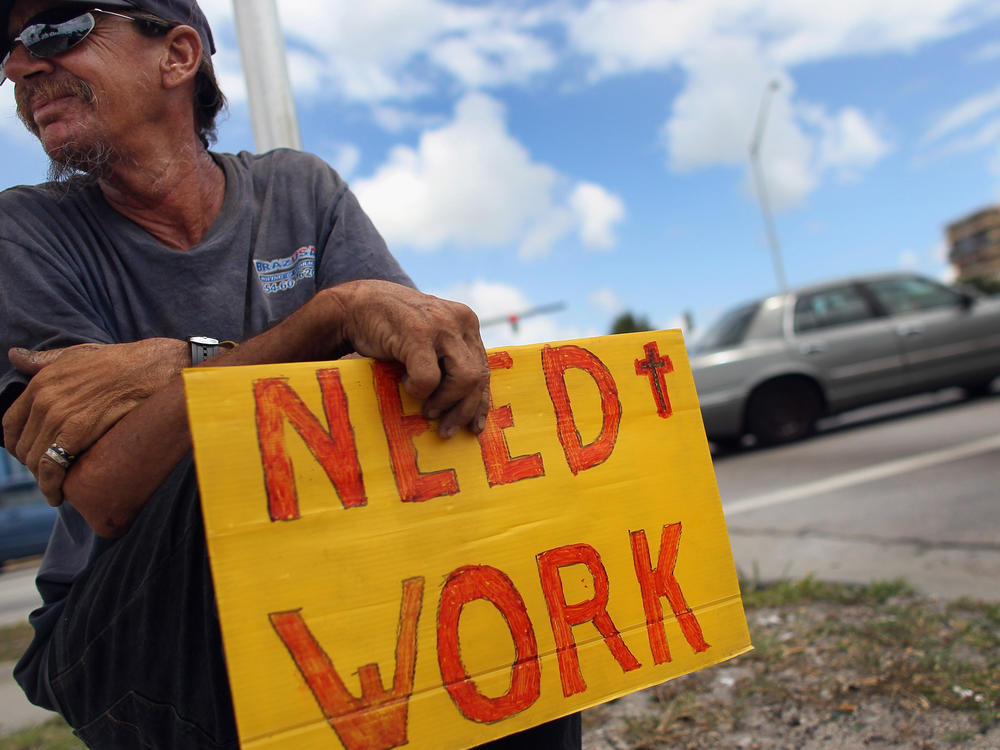Loading...
Section Branding
Header Content
The 'R' word: Why this time might be an exception to a key recession rule
Primary Content
October's unemployment rate set off alarm bells in some quarters. That's because it was a half percentage point higher than its recent low — a jump that by one rule of thumb signals the onset of a recession.
The monthly jobs report showed the U.S. unemployment rate was 3.9% in October — very low by historical standards but up from 3.4% in April.
Here's why that's worth watching, but may be less worrisome than it seems.
The Sahm Rule has observed a pattern since 1970
The rule was formulated by Claudia Sahm, a former Federal Reserve economist, who observed that every time since 1970 that unemployment rose by half a percentage point or more from its low point in the preceding year, it marked the beginning of a recession.
The logic of the rule is simple: When people lose their jobs, they spend less money, which puts pressure on businesses to cut more workers, and the downward cycle continues. Once unemployment jumps by half a percentage point, it typically keeps on climbing — at least 2 points and sometimes more.
But Sahm says this time may be different.
"Empirical patterns are not laws of nature," Sahm told Weekend Edition Sunday. "Rules are made to be broken."
Why this time might be different
First, there's the math. The Sahm Rule is based not on the monthly unemployment rate, but rather a three-month rolling average. And while that's up from its rock-bottom level in April, it hasn't risen by half a percentage point — at least not yet. So the alarm bell isn't actually ringing.
What's more, much of the recent rise in the unemployment rate stems not from people losing their jobs but from new people entering or re-entering the workforce. More people were working in October than were in April. But because the number of people available to work had grown faster, the unemployment rate went up.
That's not likely to trigger the kind of negative feedback loop of layoffs and reduced spending the Sahm Rule is based on. In fact, personal spending has remained surprisingly strong — helping to boost GDP at a rapid rate in July, August and September.
But we're not out of the woods
It's not clear how long that pace of spending can continue, however. The Federal Reserve has raised interest rates aggressively in an effort to curb inflation. That's already put the brakes on the housing market, and could slow other parts of the economy as well.
Many people have been relying on borrowed money to support their spending. Credit card debt grew to a record $1.08 trillion in the fall. And the number of people falling behind on credit card bills has been growing.
"I'm a macroeconomist, so I'm pessimistic by my wiring," Sahm says. "We want to hope for the best but prepare for the worst. And the way that I can help people prepare is having a good read on what's going on in the economy."
Many forecasters still think a recession could be on the horizon. But for now at least, there's no rule saying it has to be that way.
Copyright 2023 NPR. To see more, visit https://www.npr.org.

